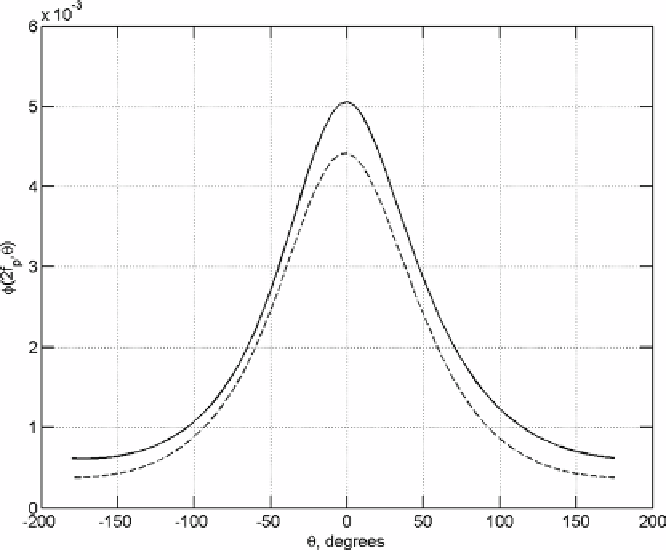Geoscience Reference
In-Depth Information
Figure 7.10 Same as in
Figure 7.8
,butfor
φ
i
(
2
f
p
,θ)
(solid line) and
φ
p
(
2
f
p
,θ)
(dashed line)
directional spectrum at double peak frequency 2
f
p
. Figure is reproduced from
Young & Babanin
(
2006a
) © American Meteorological Society. Reprinted with permission
physical, either experimental or theoretical argument and therefore, technically speaking,
are not the subject of this topic. We should treat with all due respect the tremendous job
the forecast-model developers have done, including their efforts to treat dissipation in a
sensible way. In the absence of reliable knowledge and firm understanding of the breaking-
dissipation behaviour, such models still perform very well in the majority of circumstances,
but this is a topic of forecasting technologies, numerical modelling, data assimilation,
applied mathematics and other related disciplines.
The chapter on spectral dissipation would however be incomplete without outlining the
dissipation terms presently employed for practical needs, their advantages and deficiencies,
and future prospects in this regard. At the time of writing, this particular topic is undergoing
rapid development and is subject to concentrated effort by a number of research groups
around the world, and therefore we will pay more attention to the prospects rather than to
the present state of wave-dissipation modelling. We will largely follow
Babanin & van der
Westhuysen
(
2008
) and
Babanin
et al.
(
2010c
) in this discussion.
The dissipation term
S
ds
is one of the three most important source functions of the
radiative transfer
equation (2.61)
employed by all spectral wave models to predict the
wave spectrum
F
. Since a major, if not dominant part of
S
ds
is attributed to energy losses

Search WWH ::

Custom Search